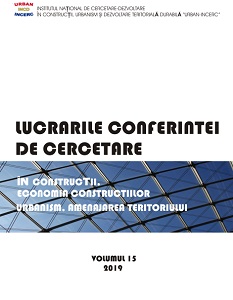Reducerea riscului seismic - fundamentul unei dezvoltării durabile
Reduction of the sesimic risk - foundation of sustainability
Author(s): Aurelia Bradu, Adrian-Alexandru Ciobanu, Constantin Miron, Monica Cherecheş,, Florina FILIP
Subject(s): Architecture
Published by: INCD URBAN-INCERC
Keywords: seismic risc mitigation; earthquakes; disaster management
Summary/Abstract: Seismic hazard represents the intrinsic natural occurrence of earthquakes and describes the properties of natural phenomenon. The notion of seismic risk is employed to specify the effects of earthquakes on social, economic and environmental aspects in a certain period of time and can be defined as interaction of three parameters: seismic hazard, exposure time and structure vulnerability. A high seismic risk does not involve a high seismic hazard and vice versa. The lack of preventive measures in regions with low seismicity leads to the increasing vulnerability of the infrastructure, which induces the rise of seismic risk level. Disaster risk management is quantified by the application of appropriate policies and strategies necessary to prevent and reduce disaster risk, manage residual risk, thereby enhance the resilience of the system. There are two strategic ways to reduce seismic risk: improvement of emergency response and adequate design of structures. As well know, the prevention is further cost-effective and can play even the role of a driver for economic growth, and it is paid with more attention in the disaster management cycle. Performance based seismic design involves the development of safety criteria in which the hazard is determined probabilistically as a function of the potential consequences of failure. Even if earthquakes cannot be accurately predicted, the disastrous consequences produced by human loss, economic and social damage can be minimized. In this paper are presented models of seismic risk mitigation programs for Turkey, Greece and Romania.
- Page Range: 91-98
- Page Count: 8
- Publication Year: 2019
- Language: Romanian
- Content File-PDF

